Nicknamed “Cape Dye,” the thirteenth hole is situated alongside Lake Austin with the famous Pennybacker Bridge behind the tee box. The short par four gives fans exactly what they want to see: views, history, and fun golf. The thirteenth is your quintessential “short par four” – it only measures 317 yards from the back tee and forces players to make a decision, go for it or layup. The tee box floats out into Lake Austin the fairway wraps around the lake. It’s a modest 290 yards to carry the water to get to the green. The short thirteenth provides variety at the right time to create excitement, something match play thrives on. The options and width off the tee, contouring throughout the hole, and overall atmosphere makes it one of the more memorable holes on tour.
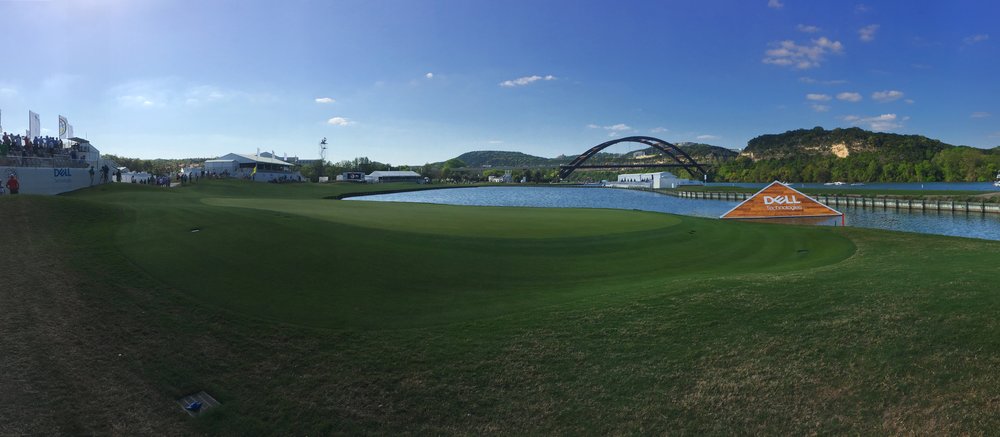
What’s happened – Last year the majority of players chose to lay up on the 13th. Those who went for the green saw mixed results with players winning the hole 10 times and losing 14 times. In 2016 25 players who went for the green won the hole and 20 lost. It brings the two year split to a near dead heat – 35 wins and 34 losses. What can’t be measured is the momentum a great shot at 13 and a win can create in a match.
In the 2017 finals match, Jon Rahm stood on the 13th tee 4-down to Dustin Johnson. After a Johnson lay up, Rahm went for the green and was successful, winning the hole. It sparked a comeback with Rahm winning three of the next four to square the match. Rahm ultimately lost one down, but the 13th proved to be the jumpstart he needed to give himself a chance for victory.
Playing the hole – One of the main factors for a player’s line off the tee is how the match stands: players with a solid lead may have a little more freedom with their line and may choose to lay back, while players down a few holes may be inclined to take on more risks. Another key factor is the wind direction. As PGA Tour numbers show, the closer you are to the green, the more likely a birdie is. Given a head wind, however, this may be a difficult reality with the room for error on the carry being very small even for the longer hitters. With a tailwind, the playing field (regarding driving distance) can be greatly leveled and give nearly every player an opportunity to go for the green. Ultimately, players have three main areas on the hole to play towards.
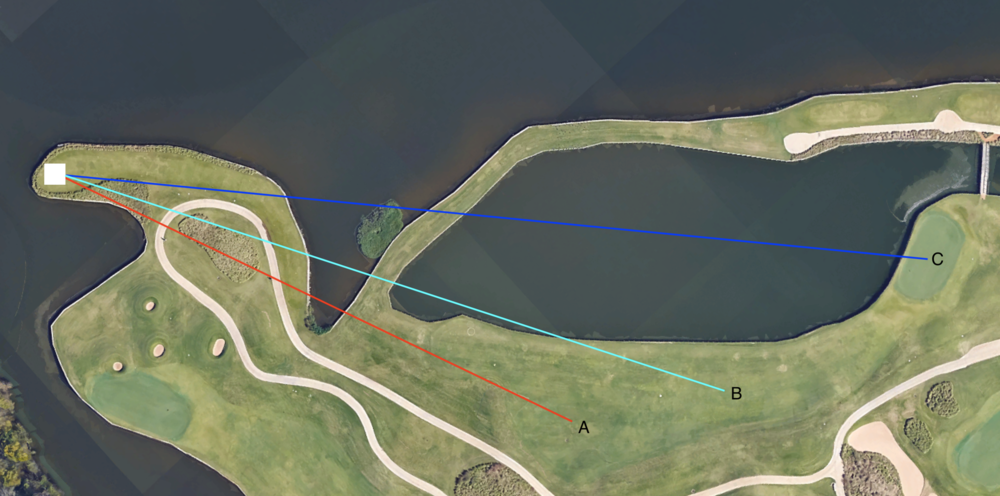
The options on the short par-4 13th at Austin C.C.
Taking Line A off the tee is without a doubt the most conservative play. With roughly 40 yards of width (almost 50 yards at its widest point) and requiring a fairly short club, the threat of the water on the left is somewhat minimal. The angle into this green is not ideal, but given the right-to-left slope feeding toward the water, this line allows players to stop shots much quicker than if they were closer to the green. Players taking this line typically have a full wedge in, offering a safe play for par with a chance for birdie.
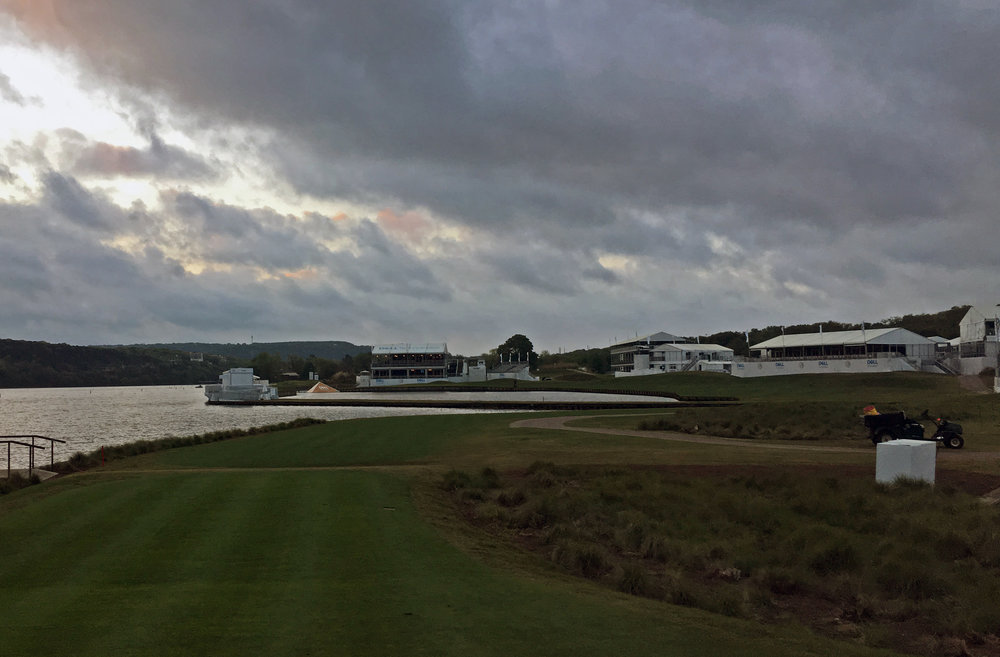
The 13th tee shot at Austin C.C.
Line B is a much more common layup off the tee. While this line sets up a much shorter shot, leaving players only a wedge in, there’s a little less room for error. With the fairway roughly 30 yards wide, an accurate wood is required to avoid water on the left and an awkward stance right of the fairway. Players also have a considerable amount of deception choosing this line. The edge of the water, much like the eighteenth hole at TPC Sawgrass, gently bends toward the green making it difficult to find a finite line to take.
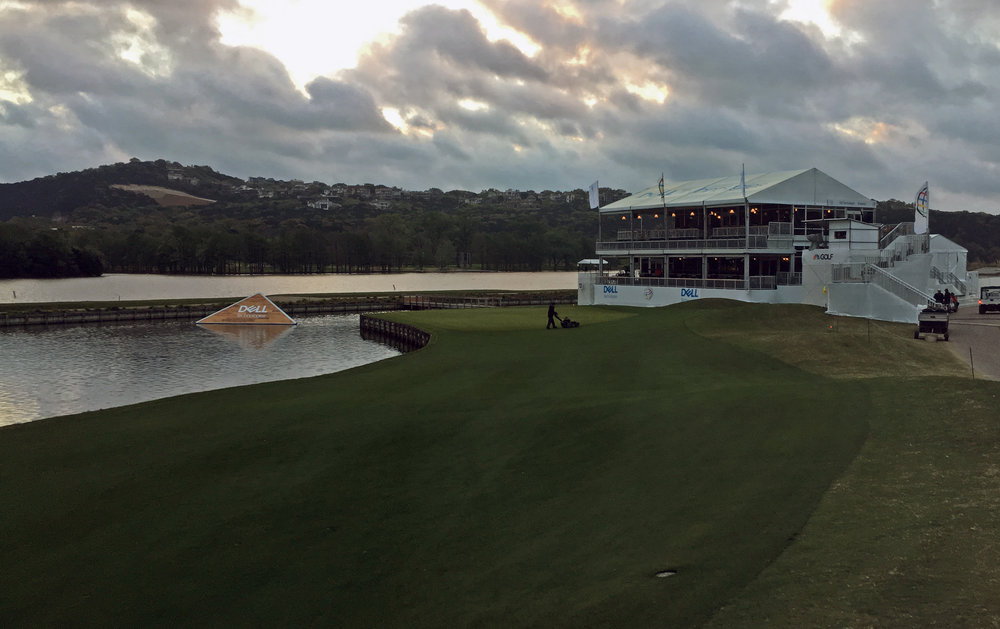
The approach from line B
Line C is obviously the most aggressive for players to take. Requiring a carry of roughly 290 yards off the tee, this line is heavily dependent on wind direction. For players that successfully carry the water, they’ll most likely be chipping from behind the green in a great position to make birdie.
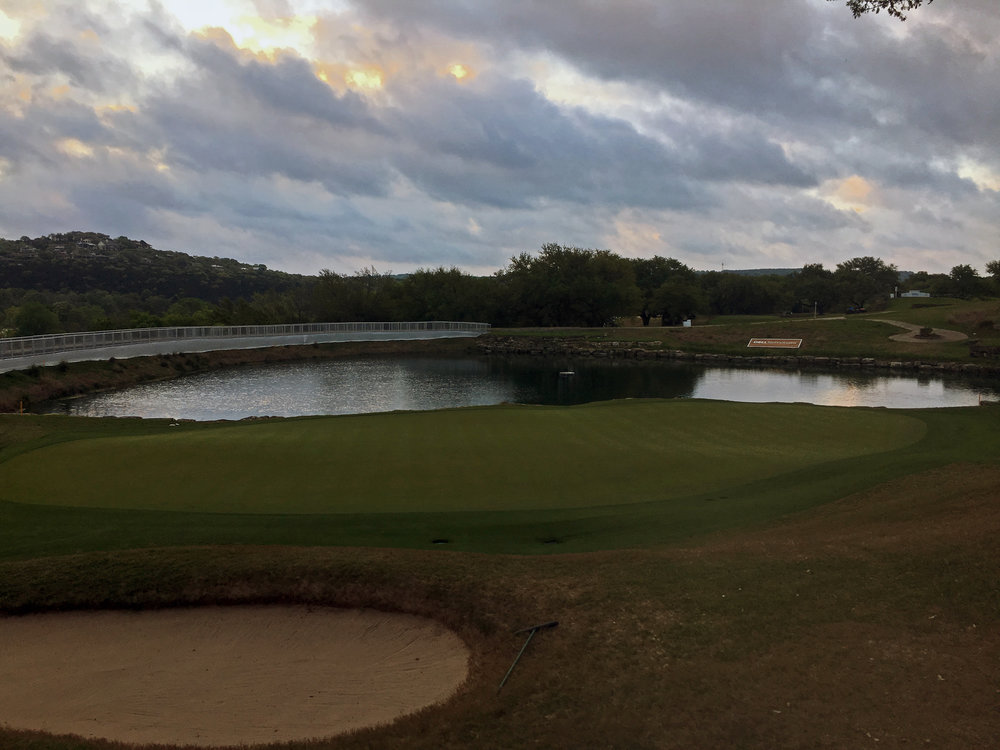
The 13th green at Austin Country Club
The options and risk presented to players on Austin C.C.’s 13th make it one of the most entertaining holes on the PGA Tour schedule. In the past two years going for the green has proven to be a near 50/50 split of winning or losing, and it will be interesting to watch matches in coming years to see if the trend changes.


 by
by 
